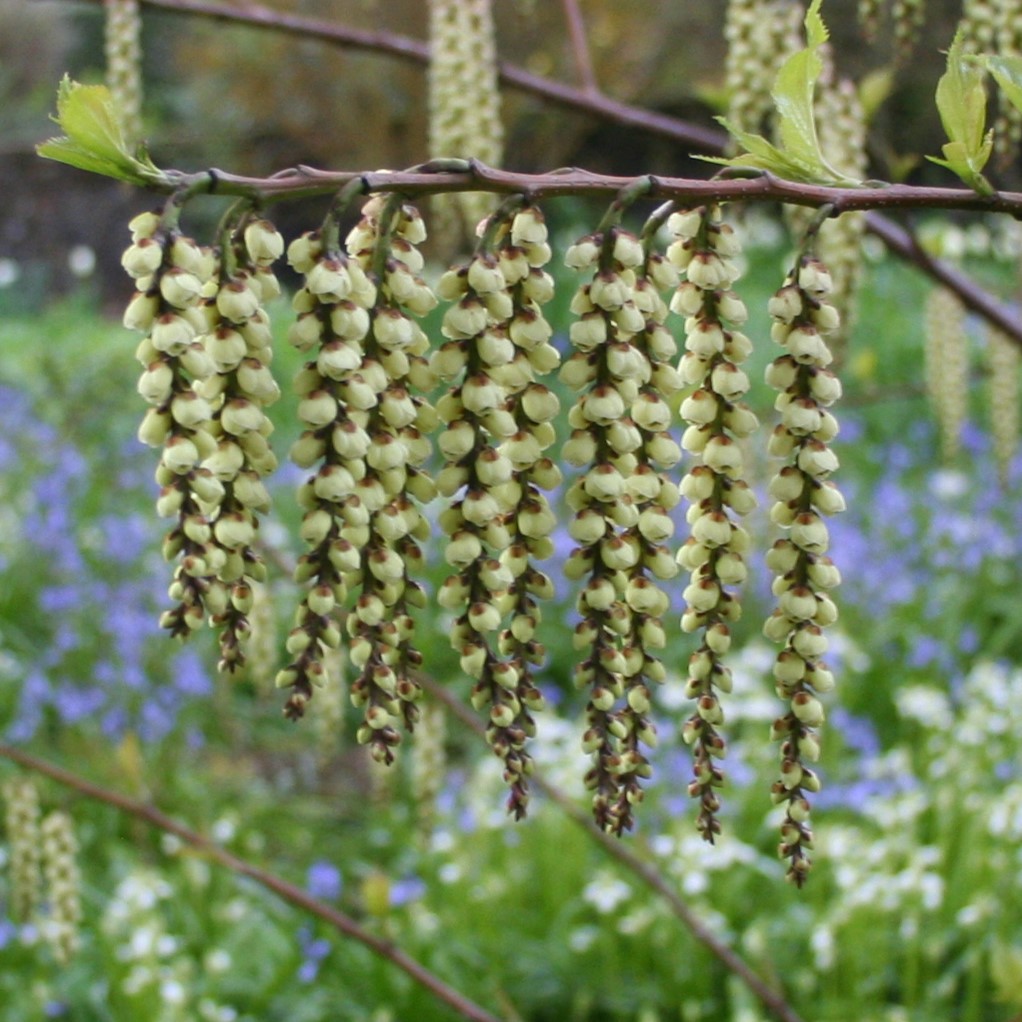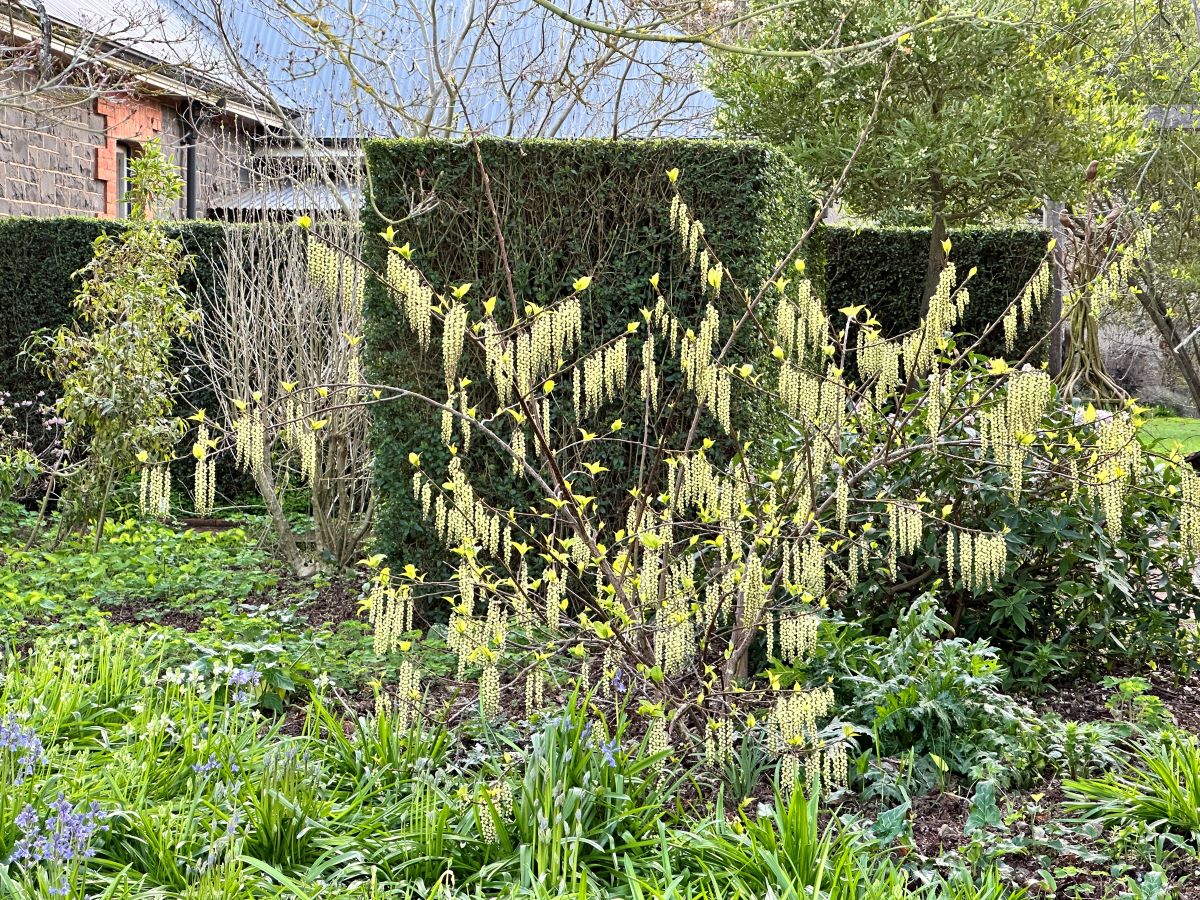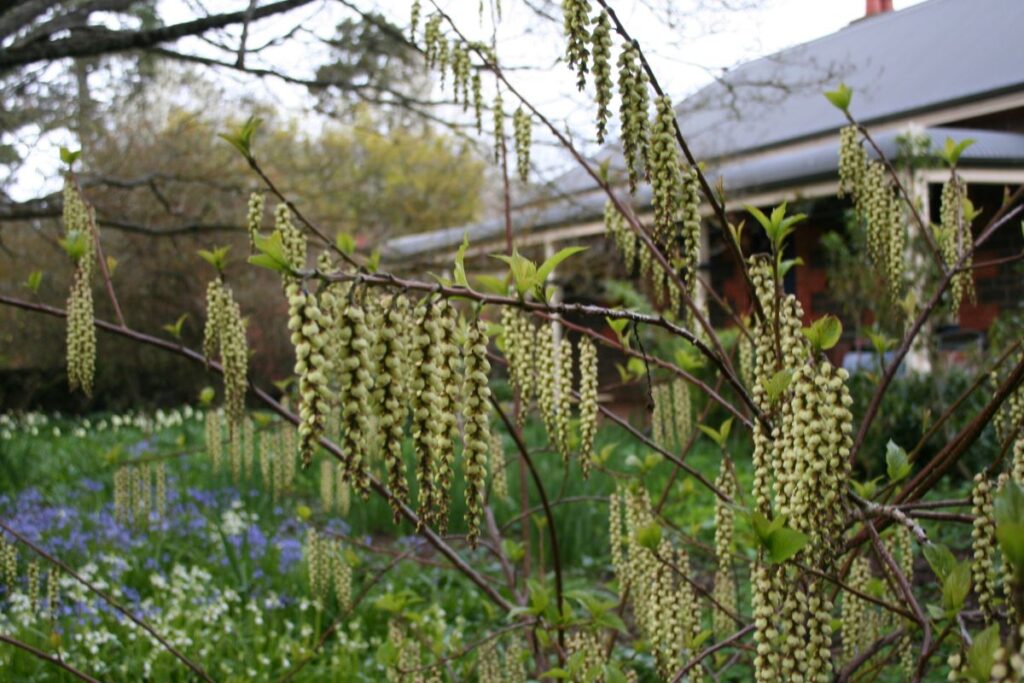Uncategorized
Stachyurus praecox
A shrub in our garden that has come into its own this year is Stachyurus praecox. Whilst its flowers have been a joy every late winter and early spring since I planted it 10 years ago, it has now grown large enough to show what an extraordinarily beautiful plant it is.
This Japanese species was first described in 1836 by the German doctor and botanist Phillip von Siebold. During the early months of 1823 Siebold was a Dutch military doctor for short time in Indonesia then known in the west as the Dutch East Indies. Later that year he was appointed resident doctor and scientist to Dejima, a small island and trading post off the coast of the Japanese town of Nagasaki. From 1641 until 1854 Dejima was the only Japanese territory open to westerners.
Very few people from the west were allowed to live on the island. Siebold was one. After successfully treating a local dignitary, he was allowed to leave the trading post and began treating people in the general Nagasaki area.
In 1824 Siebold started a medical school in Nagasaki and his students helped him in his botanical studies. For the next six years he, with the help of Japanese associates, collected and sent back to The Dutch city of Lieden countless botanical specimens. Our Stachyurus was one.


Siebold has had such beautiful plants as Hosta sieboldii, Magnolia sieboldii, Primula sieboldii and Clematis florida var sieboldiana named after him.
I can’t remember from which Teese brother, Don or Peter, I bought Stachyurus praecox. I have known them both since Don was young teenager and Peter a primary school boy. At the time I was in my mid-twenties, almost sixty years ago, (goodness how time flies) and worked at the Boulter family nursery in Olinda in the Dandenong Ranges of Victoria. Don and Peter’s father, Arnold, worked there too. Quite a bit older than me and with a lifetimes experience in horticulture, he was the nursery propagator. He was also a man of enormous patience. He had to be.
The nursery tea room was a small shed. Every morning tea and lunch time, whilst soaking in a fog of tobacco smoke that filled the small space, I would grill Arnold to learn as much as I could from him. He was always generous in sharing his know-how. Such a gift for a passionate young gardener/nurseryman.
But back to the Stachyurus. In our garden this deciduous shrub has grown two metres tall by as much across in the decade we’ve had it in the garden. During winter, reddish flower buds hang on 10 to 15cm long threads from reddish brown branches. During most of August and well into September the buds open to soft creamy lemon pearls, so exquisites, so perfect, so right.
I don’t know what pollinates the flowers in their native habitat, but here, if you sit quietly, you can watch our local trapeze artists, the New Holland Honeyeater, supping on their nectar.
I’ve always thought that Stachyurus praecox needed the sort of position that we have it in our garden. A lightly shaded spot away from hot winds in well nurtured soil which is kept moist during summer. But during a visit to our favourite coastal town, Lorne, on the Great Ocean Road, I saw a magnificent specimen growing in full sun with the ocean a mere one hundred metres away.
Lambley doesn’t sell this glorious shrub, but Peter Teese at Yamina Nursery in Monbulk produces it.

